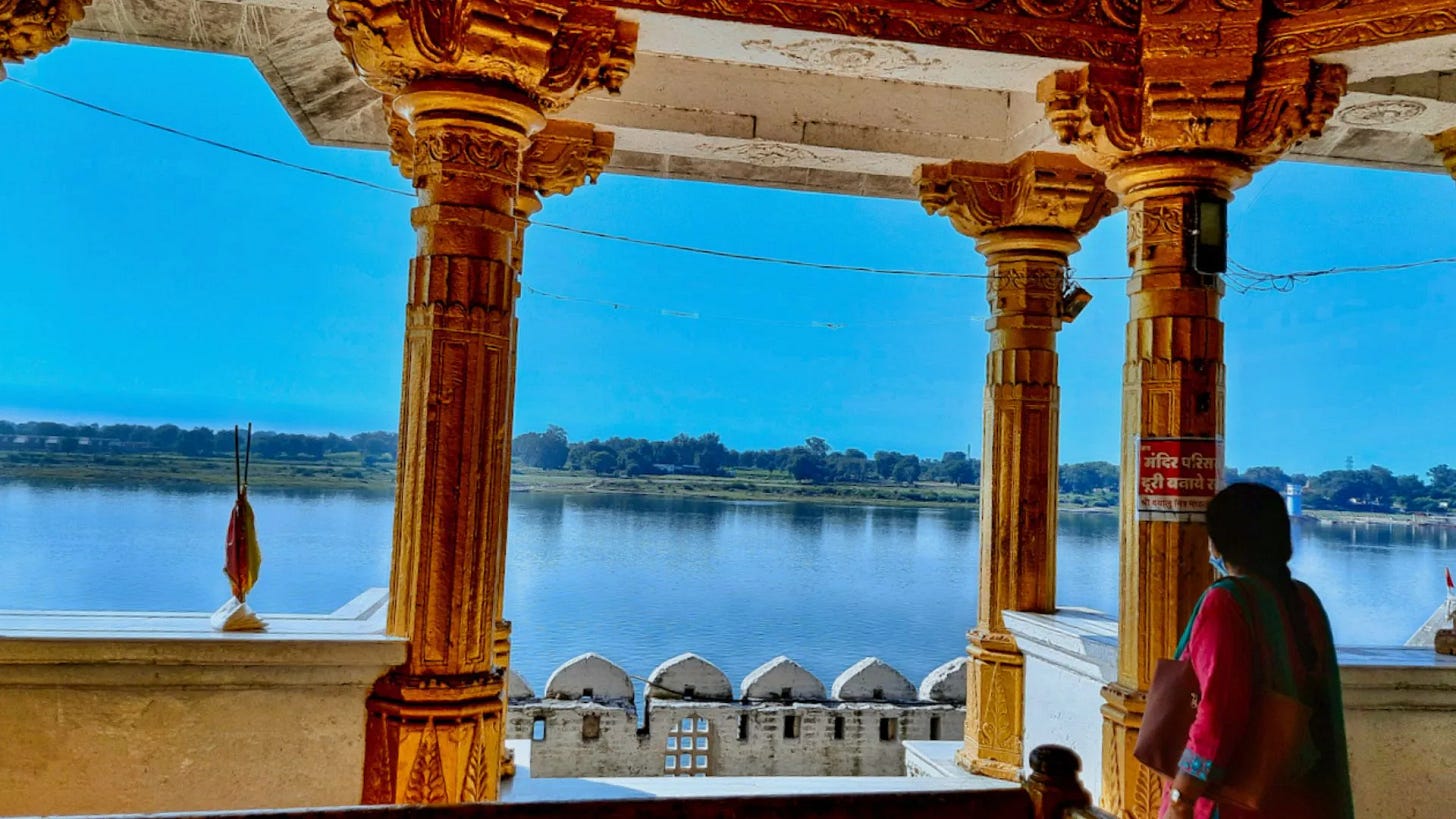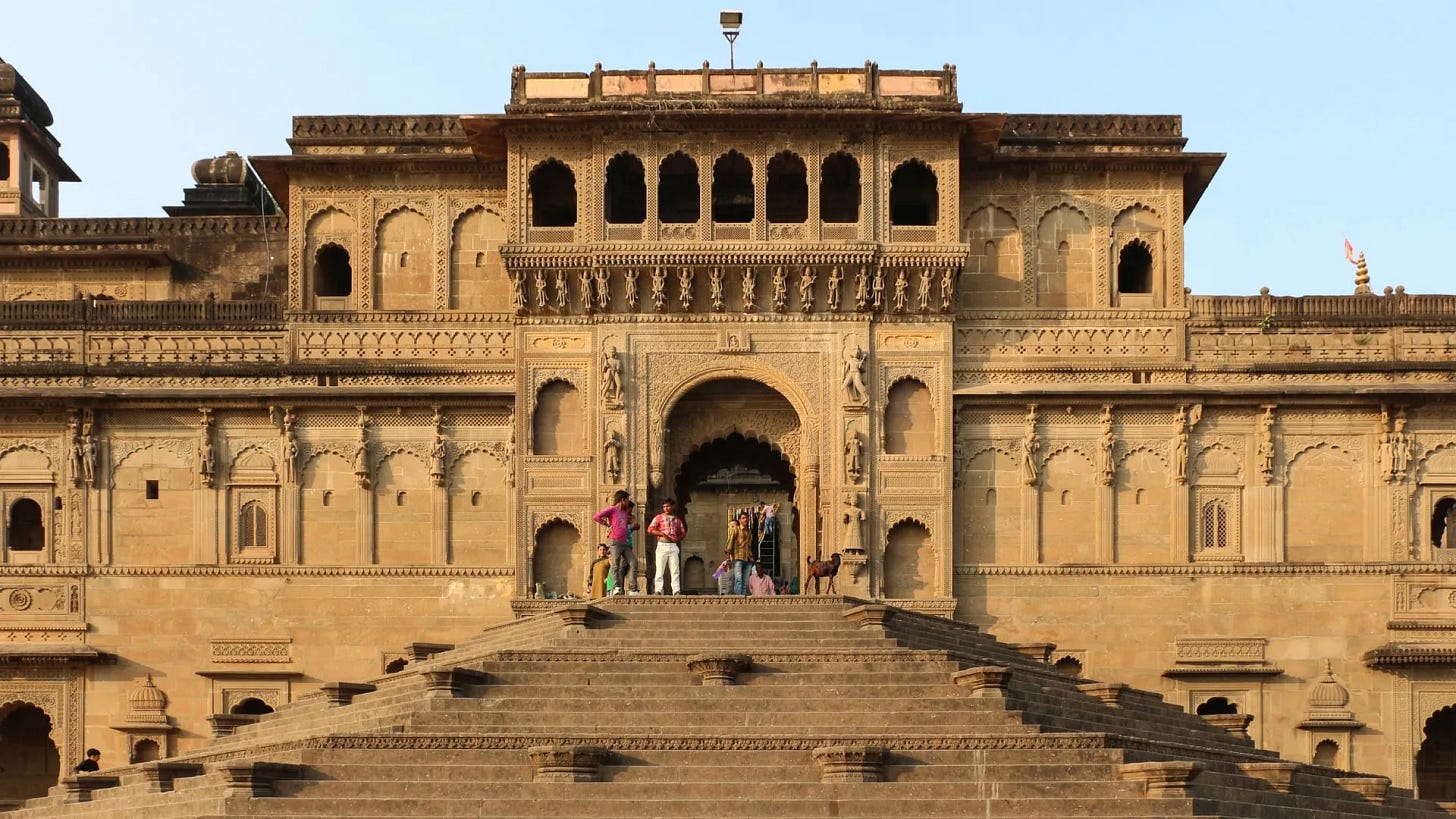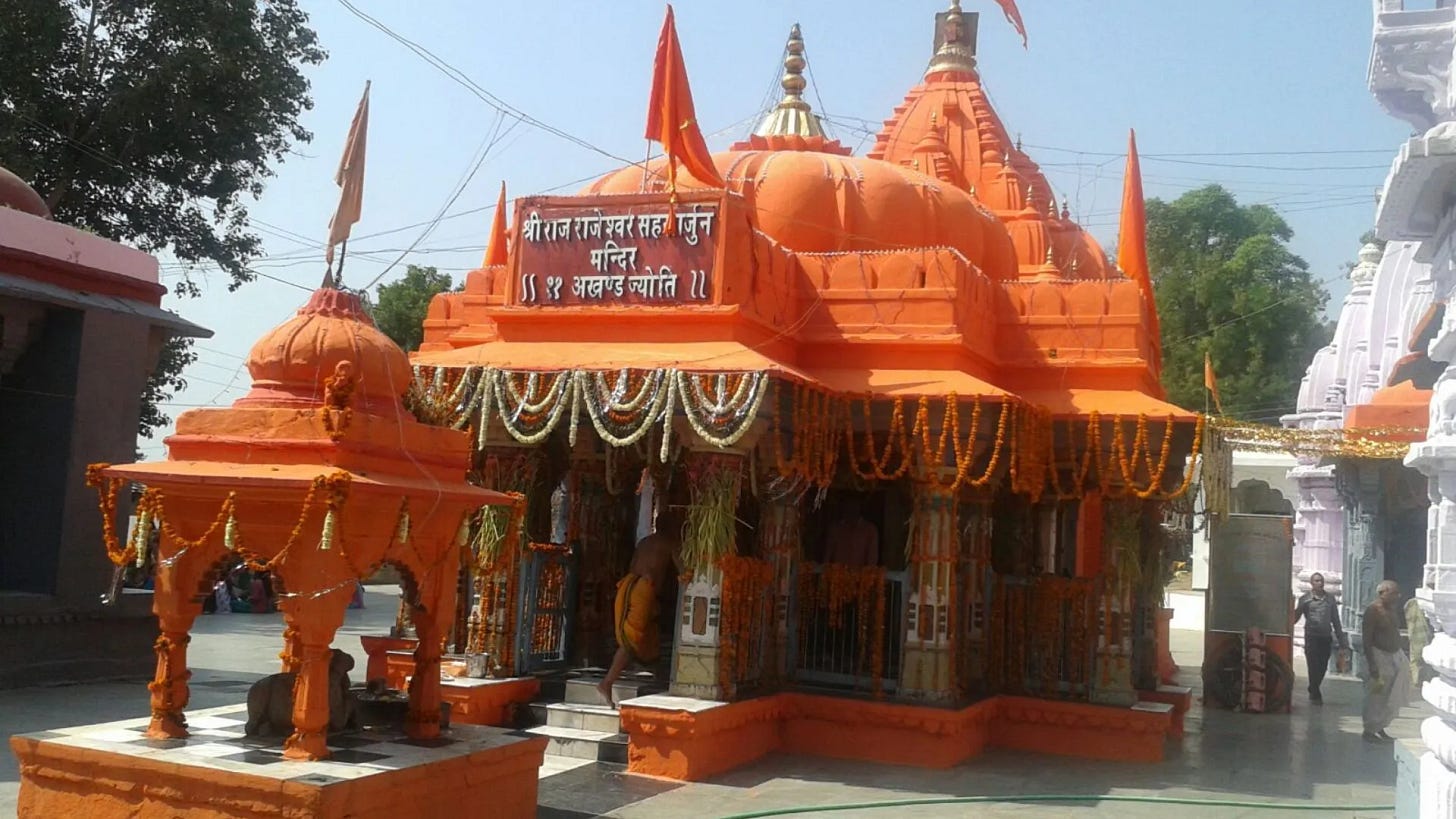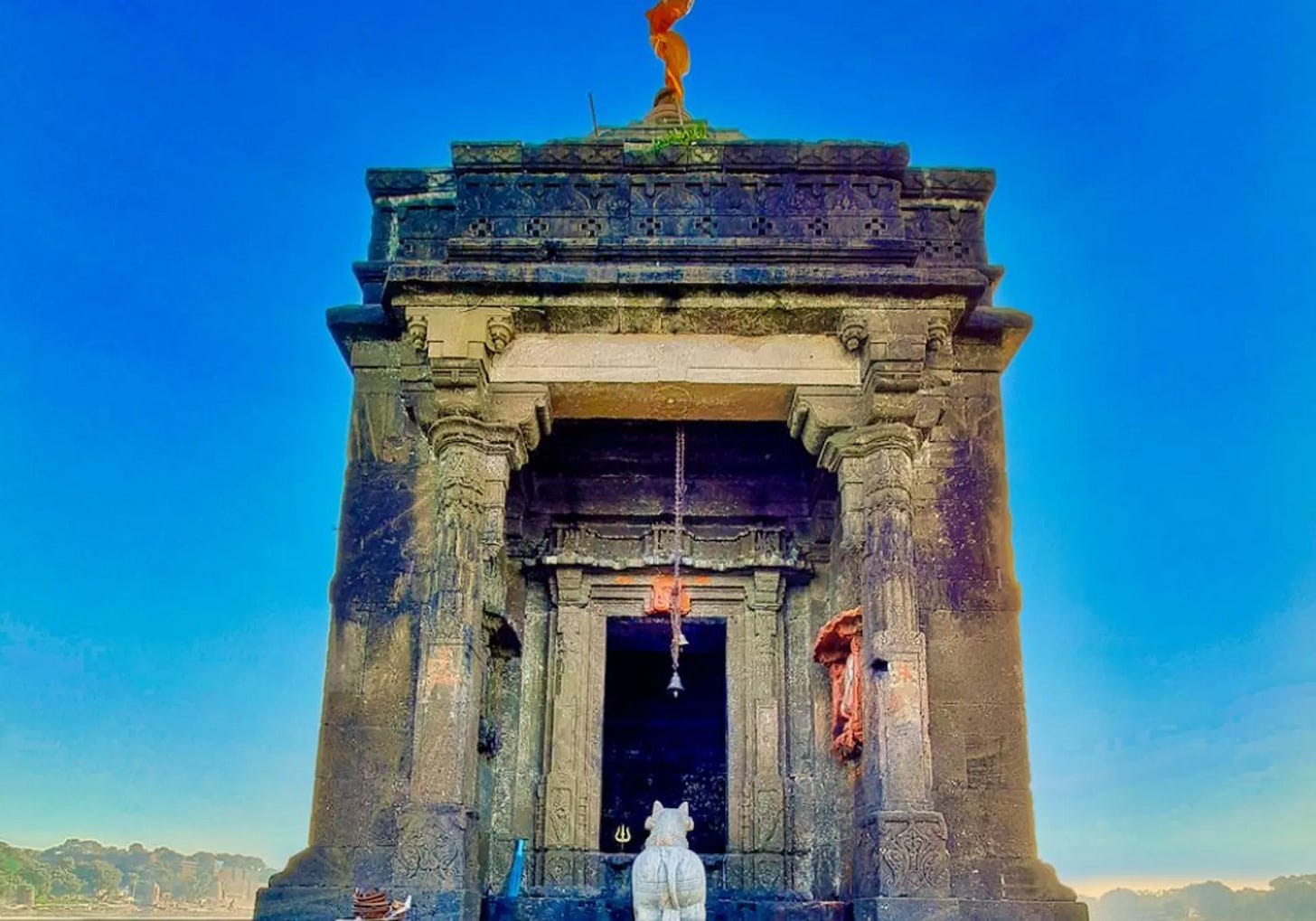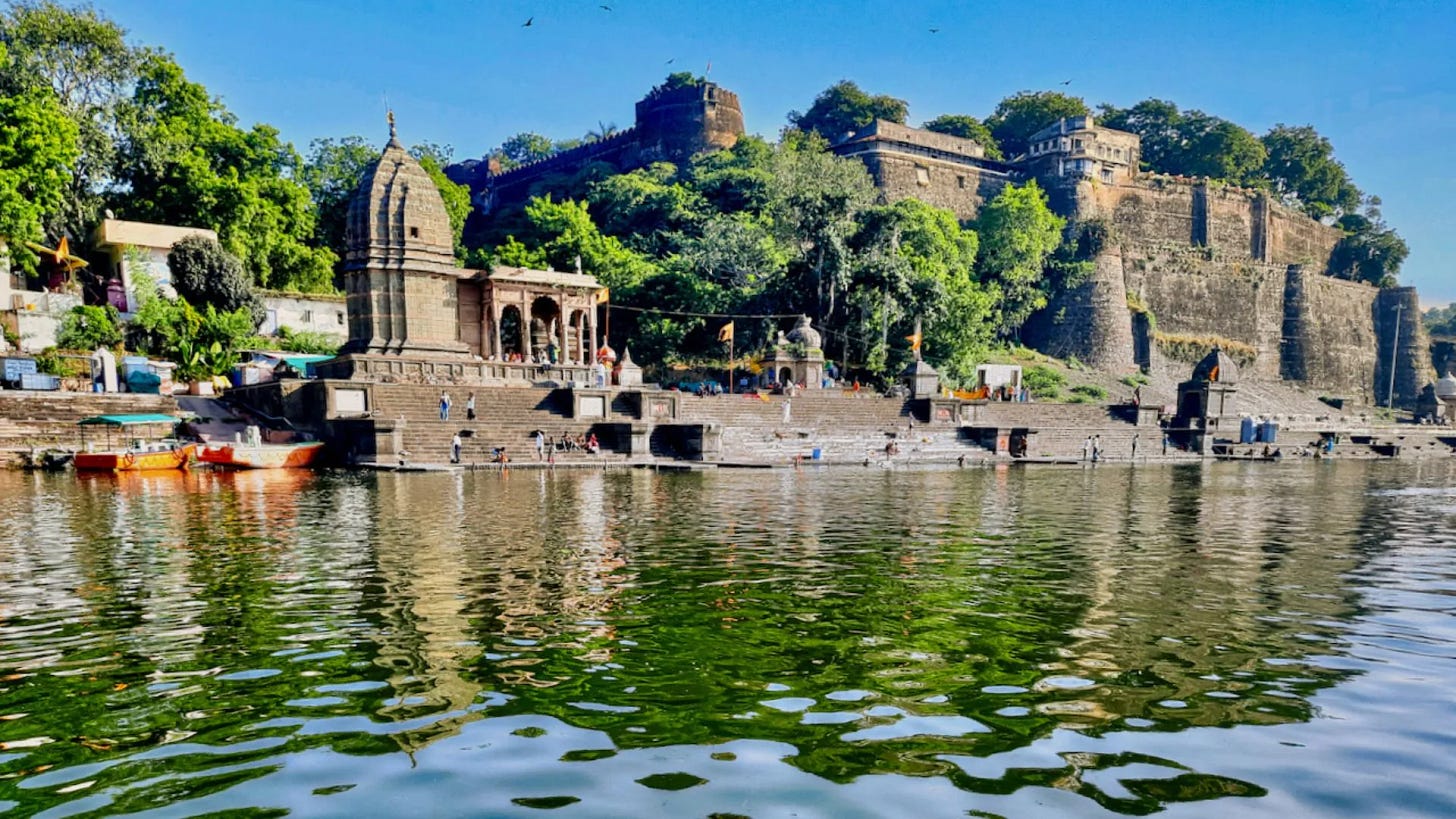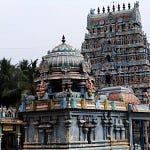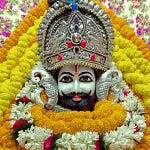Set on the serene banks of the Narmada, Maheshwar is one of those rare towns where history, craft, faith, and slow river life blend into a single, unforgettable experience. You see fort walls rising straight from the water, hear the soft thunder of looms from inside old houses, and watch evening lamps flicker to life on the ghats - all in a single day.
If you’ve been looking for a place that feels both deeply spiritual and beautifully handcrafted, Maheshwar deserves a top spot on your list.
Where Is Maheshwar & Why Is It Special?
Maheshwar is a small heritage town in Madhya Pradesh, about 90–95 km from Indore, on the northern bank of the Narmada River.
It is known for:
The 18th-century Ahilya (Maheshwar) Fort and its ghats
A close association with Queen Ahilyabai Holkar, one of India’s most admired women rulers
Maheshwari handloom weaving, especially lightweight silk-cotton sarees
A cluster of ancient temples and a calming, river-centric way of life
Ancient texts refer to Maheshwar as Mahishmati, an important city in epic and early historic times. But it truly blossomed in the 18th century, when Ahilyabai made it her capital and turned it into a hub of temples, civic works, and weaving traditions.
A Brief History: Legacy of Ahilyabai Holkar
After the decline of the Mughal Empire, the Malwa region passed into Maratha hands. The Holkar family rose to prominence under Malhar Rao Holkar, and later, after family tragedy and political turmoil, his daughter-in-law Ahilyabai Holkar took charge in 1767 - a remarkable event for that era.
From Maheshwar, she:
Built and fortified the fort-palace complex overlooking the Narmada
Laid out ghats and temples that still define the town’s riverfront
Sponsored and rebuilt temples, rest houses, and water tanks across India
Revived the local handloom tradition, bringing weavers from different regions
Her patronage gave birth to the now-famous Maheshwari fabric, and her governance style, often described as just and compassionate, left a strong imprint. Even today, Maheshwar feels like a living museum of her vision.
Best Time to Visit Maheshwar
The ideal time is October to March, when daytime temperatures hover around 20–30°C:
Comfortable for walking around the fort, ghats, and bazaars
Festive time with Diwali and Narmada Jayanti, when the town is beautifully lit and buzzing
Evenings by the river can be slightly cool - a shawl or light jacket is handy
Summer afternoons can be harsh, and the monsoon, while atmospheric, may make river activities less predictable.
How to Reach Maheshwar
By Air
Nearest airport: Devi Ahilya Bai Holkar Airport, Indore (~95 km)
From Indore, you can hire a taxi or use state/private buses to reach Maheshwar
By Train
Closest station: Barwaha (~39 km)
More convenient option: Indore Junction (~90 km), with better connectivity to major Indian cities
By Road
Well-maintained state highways connect Maheshwar to nearby cities:
Indore to Maheshwar: ~90 km, about 2.5 hours via NH52
Ujjain to Maheshwar: ~150 km, about 3.5 hours
Bhopal to Maheshwar: ~270 km, about 5.5 hours
Top Experiences in Maheshwar
1. Walk Through Ahilya (Maheshwar) Fort
Perched on a hill above the Narmada, Ahilya Fort is the emotional and physical heart of Maheshwar. Built in the 18th century, it once housed the royal residence, administrative offices, and durbar hall.
Inside the complex, you’ll find:
The Rajwada (old palace) with courtyards and arched corridors
A life-size statue of Ahilyabai Holkar seated on a throne
Grand gateways like Ahilya Dwar
Old structures that hint at the vibrant court life that once filled these halls
From the fort’s edge, you get sweeping views of the Narmada River, ghats, temples, and boats drifting slowly downstream.
A portion of the fort, Ahilya Wada, is now an exclusive heritage hotel, which adds a lived-in charm to the complex rather than turning it into a silent ruin.
Timings: Approximately 7 am – 5 pm
Entry: Usually free (specific activities or hotel areas may have charges)
2. Explore Maheshwar’s Temples
Maheshwar isn’t just a fort town; it is also a temple town, dotted with shrines big and small. Many were built or restored under Ahilyabai’s patronage.
Some key temples to visit:
Kaleshwar Temple
Close to the ghats
Dedicated to Lord Shiva
Noted for its intricately carved pillars and domed sanctum
Rajarajeshwara Temple
Considered one of the oldest temples in Maheshwar
Famous for its tradition of 11 Akhand Deepaks - lamps believed to have been burning continuously in honour of Agni, the fire god
Kashi Vishwanath Temple
Commissioned by Ahilyabai in the late 18th century
Designed as a smaller reflection of the Kashi Vishwanath Temple in Varanasi
Stepping inside feels like experiencing a piece of Kashi on the banks of the Narmada
Baneshwar Temple
A striking Shiva temple located on a tiny island in the middle of the river
Estimated to be nearly a thousand years old
Local legends say the linga was established by Banasura, a devout follower of Shiva
As you walk along the ghats, keep an eye out for smaller shrines tucked into corners and steps. Each has its own character and stories.
3. See Maheshwari Weaves Come Alive at Rehwa Society
No trip to Maheshwar is complete without experiencing its loom culture. At the heart of this is the Rehwa Society, an organisation set up in the late 1970s by the Holkar family to revive Maheshwari weaving and support local weavers.
What to expect at Rehwa Society:
Rows of wooden handlooms in action
Skilled artisans weaving silk-cotton sarees with delicate borders
Motifs inspired by local temple spires, ghats, and architectural patterns
A chance to understand the entire process — from setting up the warp to finishing a saree over several days
It’s also one of the best places to buy genuine Maheshwari textiles, including:
Sarees
Dupattas
Stoles
Fabric lengths
Timings: Roughly 10 am – 6 pm
Entry: Free
If you enjoy craft and slow processes, keep at least 1–2 hours just for this visit.
4. Take a Boat Ride on the Narmada
One of the most memorable ways to see Maheshwar is from the water itself.
Boats usually operate from the ghats below the fort
As you glide along, you see fort walls, ghats, temples, and houses forming a dramatic backdrop
From the river, the fort looks taller and more imposing, rising almost straight out of the stone steps
Many rides halt at Baneshwar Temple on the small river island before looping back.
Best time:
Sunrise: Soft light, fewer people, a very tranquil experience
Sunset: Golden light on the fort and ghats, perfect for photography
Tip:
Always confirm the fare in advance and ask roughly how long the ride will be.
5. Experience the Evening Narmada Aarti
After sundown, head to Ahilya Ghat for the Narmada Aarti.
Priests line up with lit lamps
The soundscape fills with bells, conches, and chanting
Rows of diyas reflect on the water, adding to the serenity
It’s not an overly long ceremony, but it leaves you with a deep sense of calm and is a beautiful way to end your day in Maheshwar.
6. Eat Like a Local: Food in Maheshwar
Madhya Pradesh’s Malwa region is known for its hearty, flavourful food, and Maheshwar gives you a cosy, small-town version of that culinary heritage.
Must-try dishes:
Poha–jalebi: Classic breakfast pairing - light, tangy poha with crisp, syrupy jalebi.
Dal baafla: Wheat balls baked or boiled and served with ghee and lentils — a cousin of Rajasthani dal baati, but with its own Malwa twist.
Bhutte ka kees: Grated corn cooked slowly with milk and spices, slightly sweet, slightly savoury, and very comforting.
Sattvik thali: Pure vegetarian platter with dal, vegetable preparations, roti, rice, and a dessert, ideal if you want simple temple-style food.
Popular places mentioned by travellers:
Labboo’z Café & Lodge – A relaxed space near the fort serving Indian and some continental dishes.
Gurukripa Restaurant – Loved for its thalis with generous, often unlimited servings.
Shree Mahakali Bhojnalaya – Known for simple, sattvik meals in a traditional setting.
Krishna Sweets – Famous for its jalebis, which make an excellent snack after your fort or ghat walk.
7. Shopping in Maheshwar: Beyond Souvenirs
Maheshwar is paradise if you love textiles. But it also has charming local markets with handicrafts.
For Maheshwari textiles:
Rehwa Society (inside Ahilya Fort) – Best for seeing weaving and buying authentic, heritage-quality pieces.
Maheshwari Handloom Works & Tana Bana Handloom – In the main bazaar, with a wide variety of traditional and contemporary designs.
Pawar Handloom & Hansa Handloom – Great for cotton and silk blends, plus fabric lengths you can later stitch into outfits.
For other local goodies:
Markets around Rajwada Gate and MG Road offer:
Brassware
Wooden toys
Stone idols
Glass bangles
Small religious souvenirs
Set aside half a day if you enjoy browsing, bargaining, and discovering unique pieces.
8. Where to Stay in Maheshwar
You’ll find everything from intimate heritage stays to comfortable mid-range hotels.
Ahilya Fort Heritage Hotel
Boutique heritage stay inside the fort
Atmospheric courtyards, river views, and a strong sense of history
MPT Narmada Resort (MP Tourism)
Reliable, family-friendly option
Spacious rooms and gardens, right along the Narmada
Araam Baagh Maheshwar
Mid-range property with Mughal-style design and open courtyards
Good choice if you want comfort with a touch of elegance
Hotel Shivalay Palace
Popular and well-rated among travellers as a more budget-conscious stay
9. Extend Your Trip: Nearby Places
If you have an extra day or two, Maheshwar can be combined with:
Mandu
A short drive away
Famous for its medieval palaces, fortifications, and romantic architecture
Omkareshwar
A sacred island town on the Narmada
Home to one of the twelve Jyotirlingas of Lord Shiva
Together, they make a meaningful heritage-and-pilgrimage circuit in central India.
Practical & Insider Tips for Maheshwar
Clothing:
Light cottons for the day
A shawl or light jacket for cooler evenings between October and March
Footwear:
Comfortable shoes with good grip - ghats and fort steps can be uneven and occasionally slippery
Money:
Carry sufficient cash, as smaller handloom shops, eateries, and temple donations may not always accept digital payments
Timing for weaving visits:
Visit Rehwa Society in the morning to see weavers at work before it gets busy
Boat rides:
Prefer sunset rides for the best photos
Agree on fare and duration before you board
Evening aarti:
Be at the ghats by around 7 pm so you don’t miss it
Connectivity:
Mobile networks can be patchy near the river and in certain narrow lanes
Download offline maps or guide apps in advance
Local guides:
Hiring a guide at the fort or through your hotel can enrich your understanding of Ahilyabai’s life, the temples, and local legends
Festivals & events:
Around Diwali or Narmada Jayanti, Maheshwar is beautifully lit and extra lively
The Sacred River Festival, held annually against the backdrop of the fort and river, showcases classical performing arts in a spectacular setting
Maheshwar Travel FAQ
1. What is Maheshwar famous for?
Maheshwar is known for its riverside Ahilya Fort, Narmada ghats, ancient temples, and especially its Maheshwari handloom sarees and textiles, which carry motifs inspired by the town’s architecture and riverfront.
2. What are the main attractions in Maheshwar?
The key places include Ahilya (Maheshwar) Fort, the Narmada ghats, Baneshwar Temple in the river, temples like Kaleshwar, Rajarajeshwara, and Kashi Vishwanath, and the Rehwa Society workshop for handloom weaving.
3. What is the historical significance of Maheshwar Fort?
Maheshwar Fort served as the capital of Ahilyabai Holkar in the 18th century. From here, she ruled Malwa, built the ghats and temples we see today, and sponsored the renovation and construction of important shrines across India, making the fort a symbol of her enlightened rule.
4. Are there temples to visit in Maheshwar?
Yes, many. The most notable are Kaleshwar, Rajarajeshwara, Kashi Vishwanath, and Baneshwar Temple mid-river. In addition, there are numerous smaller shrines along the ghats and within the fort complex.
5. Can I take a boat ride on the Narmada River?
Absolutely. Boat rides are easily available from the ghats near the fort. They usually offer river views of the fort and ghats and may include a stop at Baneshwar Temple. Sunrise and sunset are the most scenic times.
6. How do I reach Maheshwar from Indore or Omkareshwar?
From Indore, Maheshwar is about 90–95 km by road, taking around 2.5 hours. From Omkareshwar, you can hire a cab or use local transport; many visitors combine Omkareshwar and Maheshwar in a single trip.
7. Are guided tours available in Maheshwar?
Yes. You can find local guides at the fort or book them through your hotel. They are particularly useful for understanding the history of Ahilyabai Holkar, the significance of the temples, and the stories behind the architecture.
8. What are Maheshwari saris and where can I buy them?
Maheshwari saris are light, elegant silk-cotton sarees with distinctive borders and motifs influenced by Maheshwar’s temples and ghats. Good places to buy them include Rehwa Society, Maheshwari Handloom Works, Tana Bana, Pawar Handloom, and Hansa Handloom.
9. Is one day enough for Maheshwar?
You can fit in the fort, ghats, a weaving visit, a boat ride, some shopping, and the evening aarti in one intensive day. However, spending 1–2 nights allows you to experience misty mornings, relaxed evenings by the river, and unhurried time with the looms and bazaars.
10. Are there heritage stays or good hotels in Maheshwar?
Yes. Ahilya Fort Heritage Hotel offers a premium heritage experience inside the fort. MPT Narmada Resort, Araam Baagh Maheshwar, and Hotel Shivalay Palace are other popular options across different budgets.
11. What are the timings and entry fees for Maheshwar Fort?
The fort complex is generally open from around 7 am to 5 pm, and entry is typically free. Some private or hotel-managed areas may have separate charges or restricted access.



